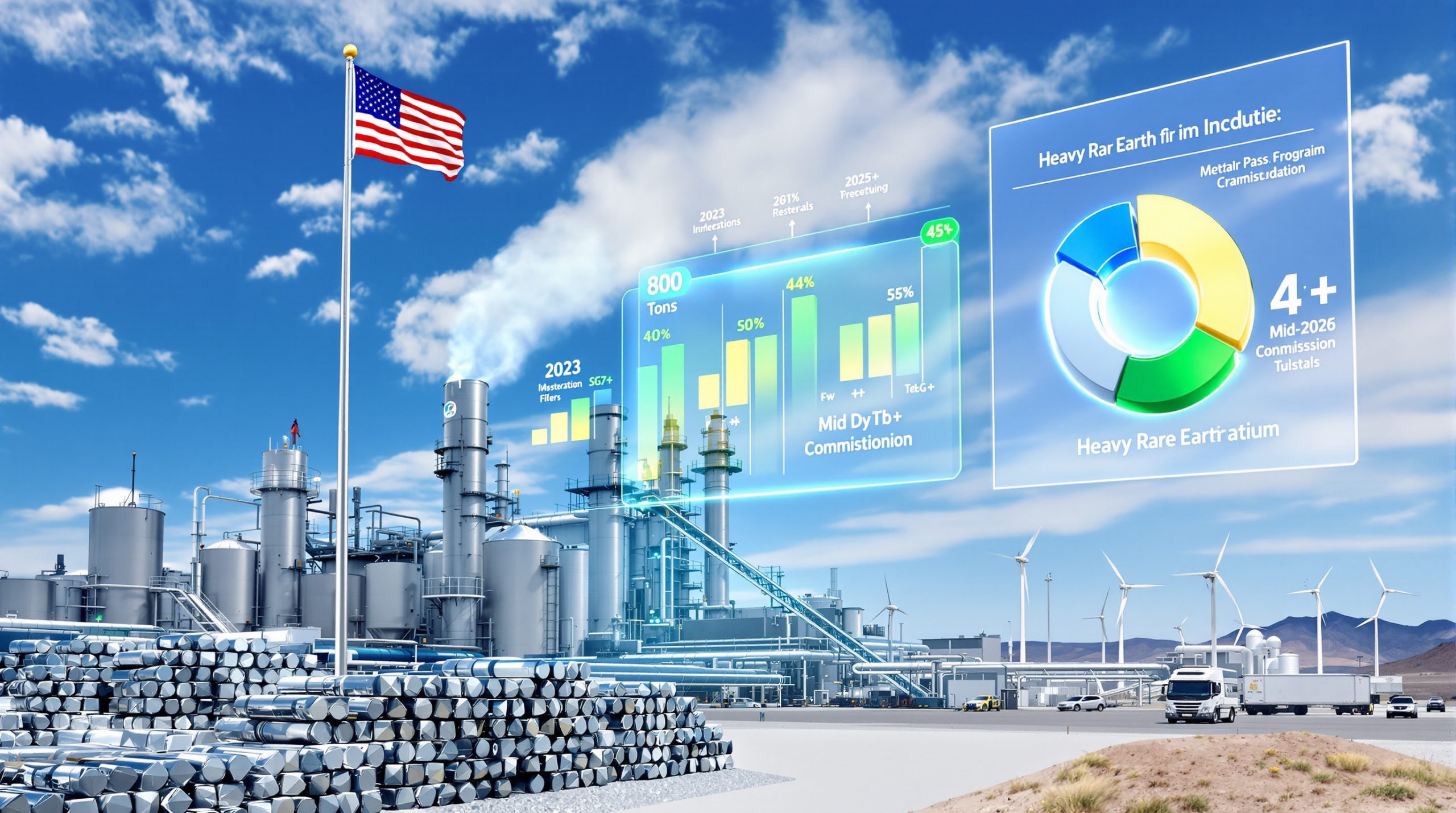Understanding the Silver Supply Deficit: How Industrial Demand Growth Is Reshaping the Market
The silver market is experiencing a fundamental transformation driven by increasing industrial applications and persistent supply constraints. This structural deficit—where demand consistently outpaces available supply—represents a significant shift in market dynamics rather than a temporary commodity cycle. Global silver mine supply has contracted at a 0.9% compound annual growth rate since 2020, creating favorable conditions for strategic investments in the sector.
According to the Silver Institute's World Silver Survey 2023, silver demand exceeded supply by 237.7 million ounces in 2022, with industrial demand reaching 508.6 million ounces, representing 48% of total demand. This imbalance has led to declining above-ground inventories from historical peaks as consumption accelerates across multiple sectors.
Why Is Industrial Silver Demand Accelerating?
The Electrification Revolution
The global transition toward renewable energy and electrification has positioned silver as a critical material for modern infrastructure. Solar photovoltaic installations now consume approximately 15% of annual silver supply, with demand projected to increase as renewable energy adoption accelerates worldwide. Each solar panel contains approximately 20 grams of silver, and with global installations projected to reach 191 GW in 2024 according to the International Energy Agency, this application alone creates substantial demand pressure.
Silver's unmatched electrical conductivity properties (63.0 × 10⁶ S/m)—exceeding all other elements—make it irreplaceable in high-performance applications where efficiency is paramount. This unique characteristic creates price-inelastic demand, meaning manufacturers cannot easily substitute alternative materials when prices fluctuate.
Technology and Manufacturing Applications
Silver's role in electronics manufacturing extends beyond traditional applications into emerging technologies. The metal's unique properties support:
- Electric vehicle production requiring 25-50 grams per vehicle (with Tesla Model 3 containing approximately 1 ounce)
- 5G infrastructure deployment using silver in connection components (expected to reach 13 million base stations globally by 2025)
- Medical technology applications leveraging silver's antimicrobial properties with 99.9% effectiveness against bacteria
- Advanced electronics with increasingly complex circuitry requiring superior conductivity
These applications create price-inelastic consumption patterns, ensuring consistent demand regardless of market conditions. The industrial sector's reliance on silver's thermal conductivity (429 W/m·K) and low electrical resistivity (15.87 nΩ·m) makes it technically superior to potential alternatives in critical applications.
What Factors Are Constraining Silver Supply?
Mining Industry Challenges
The mining sector faces significant hurdles in bringing new silver production online:
- Permitting timelines in primary jurisdictions now average 7-10 years according to the Fraser Institute
- Declining ore grades have decreased by approximately 30% over the past decade
- Environmental and social considerations create additional development barriers
- Capital allocation constraints following previous market downturns
These factors create substantial barriers to capacity expansion, with new projects facing extended development timelines before contributing meaningful production volumes. The combination of technical challenges and regulatory requirements has significantly impacted the industry's ability to respond to increasing demand signals.
The Permitting Bottleneck
Regulatory approval processes have become increasingly complex across major mining jurisdictions. Environmental impact assessments now require 18-24 months, while community consultation processes extend project timelines by an additional 12-18 months on average.
Even well-managed projects in favorable jurisdictions like Mexico average 8.5 years from discovery to production, creating predictable but extended development schedules. The Fraser Institute's Annual Survey of Mining Companies consistently ranks permitting delays as a top investment deterrent, highlighting the systemic nature of this constraint.
How Are Silver Producers Responding to Market Conditions?
Operational Excellence Initiatives
Leading silver producers are implementing strategic improvements to maximize existing asset performance:
- Americas Gold and Silver achieved a 36% year-over-year increase in silver production during Q2 2025, reaching 689,000 ounces
- Silvercorp Metals reported adjusted net income of $21.0 million and operating cash flow of $48.3 million in Q1 fiscal 2026
- Multiple producers have reduced all-in sustaining costs through efficiency programs and by-product credit optimization
These operational enhancements demonstrate the sector's ability to generate substantial cash flow in the current price environment while positioning for continued growth. Silvercorp Metals maintained an all-in sustaining cost per ounce of silver, net of by-product credits, of $13.49, significantly below industry averages. Furthermore, Fresnillo's resilience despite production challenges highlights how major producers are adapting to the supply-deficient market.
Strategic Financing Arrangements
Access to capital remains strong for quality silver projects, with recent financing activities including:
- GR Silver Mining's completion of a $13.8 million bought deal offering
- Americas Gold and Silver securing a $100 million senior secured term loan facility
- Santacruz Silver's successful BOB 140 million promissory note program through the Bolivian Stock Market
These financing arrangements provide development capital while maintaining reasonable balance sheet leverage, enabling companies to advance growth initiatives without excessive dilution. The strong investor appetite demonstrates confidence in the sector's fundamentals and future prospects. Some analysts predict these conditions could potentially trigger a silver market squeeze if industrial demand continues to accelerate while supply remains constrained.
What Role Does Exploration Play in Addressing the Deficit?
Resource Expansion Programs
Active exploration continues delivering promising results across multiple silver projects:
- Outcrop Silver reported high-grade intercepts from step-out drilling at the Los Mangos vein, including 2.11 meters grading 445 g/t silver and 2.14 g/t gold
- Silver Tiger Metals advanced exploration on prospective Northern Veins located 2 kilometers from its historic El Tigre Mine
- Global exploration spending for silver increased 8% in 2023 according to S&P Global Market Intelligence
These exploration successes demonstrate potential for organic growth within existing project portfolios, though development timelines mean production impacts remain several years away. The increasing structural complexity and intrusive-related geological controls are opening new opportunities for deeper and lateral expansion in established mining districts.
Technological Innovation
Metallurgical advancements are creating additional value from existing resources:
- Recovery optimization programs improving silver yields from complex ores
- By-product monetization strategies turning previously penalized elements into revenue streams
- Processing innovations reducing energy consumption by 15-20% and environmental footprints
These technological improvements enhance project economics while supporting sustainability objectives, creating more resilient operations across market cycles. Companies that can successfully implement these innovations gain competitive advantages in both operational efficiency and environmental performance.
What Makes the Current Silver Deficit Structural Rather Than Cyclical?
Convergence of Long-Term Trends
The current market imbalance differs from historical patterns due to several concurrent factors:
-
Industrial demand growth averaging 3-5% annually over past five years driven by secular trends in renewable energy and electrification
-
Supply constraints from declining grades and permitting challenges unlikely to resolve quickly
-
Institutional investment flows recognizing silver's dual role as industrial and monetary metal
-
Manufacturing off-take agreements reducing spot market liquidity by estimated 15-20%
This convergence creates a multi-year structural deficit rather than a temporary supply disruption, with implications for medium and long-term price discovery. Unlike previous market cycles, the current imbalance stems from fundamental changes in both demand patterns and supply capabilities. However, investors should remain aware of potential silver crash analysis to understand downside risks despite strong fundamentals.
Jurisdictional Considerations
The geographic distribution of silver production introduces additional complexity:
- North American and select Latin American operations offer regulatory stability compared to higher-risk mining environments
- Community engagement and ESG compliance increasingly influence project advancement timelines
- Geopolitical factors affecting major producing regions create supply uncertainty
These jurisdictional factors further constrain the industry's ability to rapidly increase production capacity in response to rising demand. Mexico's average timeline from discovery to production of approximately 8.5 years creates predictable development schedules for properly managed projects, providing a baseline for realistic production forecasts. Additionally, tariff impacts on silver from trade policies can significantly affect regional supply chains and price dynamics.
What Investment Criteria Should Guide Silver Sector Allocation?
Key Performance Indicators
Sophisticated investors evaluating silver companies should consider:
-
Operational metrics: Production growth trajectories, cost structures, and margin expansion potential
-
Balance sheet strength: Cash positions exceeding $200 million with no debt obligations and recent successful financing arrangements
-
Development timelines: Project advancement schedules aligned with market demand growth
-
Exploration potential: Resource expansion opportunities and discovery cost efficiency below $0.50 per ounce
-
Jurisdictional exposure: Regulatory environment stability and permitting predictability
-
ESG performance: Community relationships and environmental management practices
These criteria help identify companies best positioned to benefit from sustained market strength while managing sector-specific risks. The combination of operational excellence, financial strength, and strategic positioning enables certain companies to capitalize on the sector's favorable fundamentals. Investors should also consider implementing various silver squeeze strategies to maximize returns during periods of supply-demand imbalance.
Risk Management Considerations
Silver investments present distinct risk factors requiring careful management:
- Price volatility exceeding many comparable commodity markets
- Project development uncertainties including permitting delays and capital cost inflation
- Technical challenges in metallurgy and processing optimization
- Jurisdictional risks in key producing regions
Diversification across multiple high-quality assets with varying development stages can help mitigate these risks while maintaining exposure to the sector's growth potential. Focusing on companies with established production profiles and clear expansion pathways provides a balanced approach to sector allocation.
Conclusion: The Silver Market's Transformational Opportunity
The convergence of accelerating industrial demand and persistent supply constraints creates compelling investment opportunities in the silver sector. The structural deficit appears positioned to persist for years rather than months, supporting a fundamental reevaluation of silver's role in industrial supply chains and investment portfolios.
For investors seeking exposure to electrification trends and resource scarcity themes, quality silver assets offer attractive risk-adjusted return potential. The combination of operational improvements, strategic innovations, and favorable market dynamics suggests the current cycle represents a fundamental shift in silver's supply-demand balance that will continue to reshape the market landscape.
The silver supply deficit and industrial demand growth dynamic creates a unique investment thesis based on:
- Macro theme exposure through electrification and monetary diversification
- Supply-demand fundamentals with mine supply declining at -0.9% CAGR
- Quality jurisdictional exposure in stable regulatory environments
- Operational leverage opportunities with companies maintaining low all-in sustaining costs
- Financial strength demonstrated by robust balance sheets
- Innovation creating additional value from existing resources
- Development timelines coinciding with accelerating industrial demand
This transformational opportunity requires disciplined allocation strategies focused on high-quality silver assets with demonstrated operational excellence, financial strength, and strategic positioning in a market characterized by structural supply deficits and sustained demand growth. As we move forward, the ongoing market transformation in silver will likely present both challenges and opportunities for investors and industrial consumers alike.
Looking for Early Alerts on the Next Major Silver Discovery?
Discovery Alert's proprietary Discovery IQ model provides real-time notifications when significant mineral discoveries are announced on the ASX, helping you capitalise on opportunities in silver and other commodities before the broader market. Explore historic returns from major discoveries and begin your 30-day free trial at https://discoveryalert.com.au/discoveries/ to position yourself ahead of the market.




